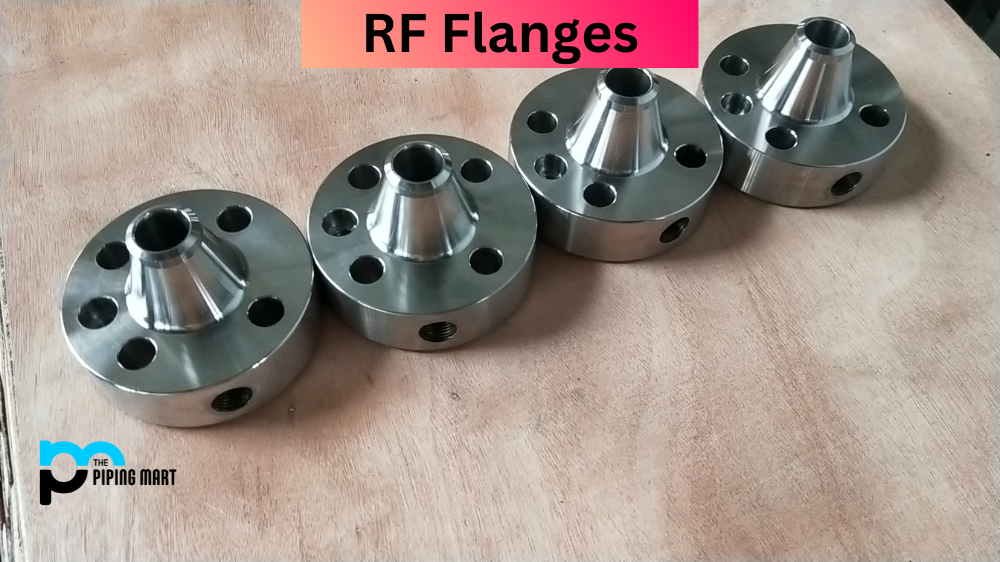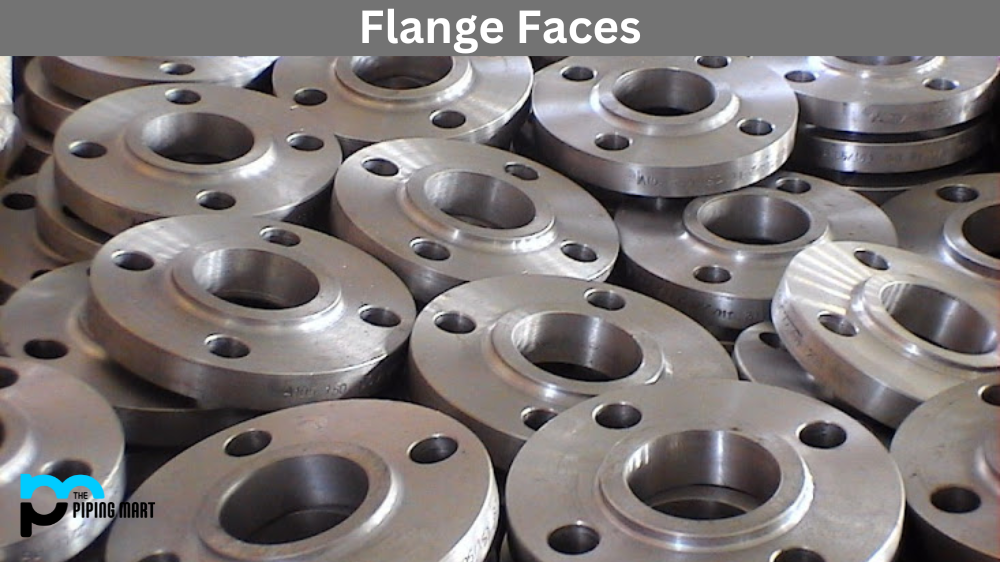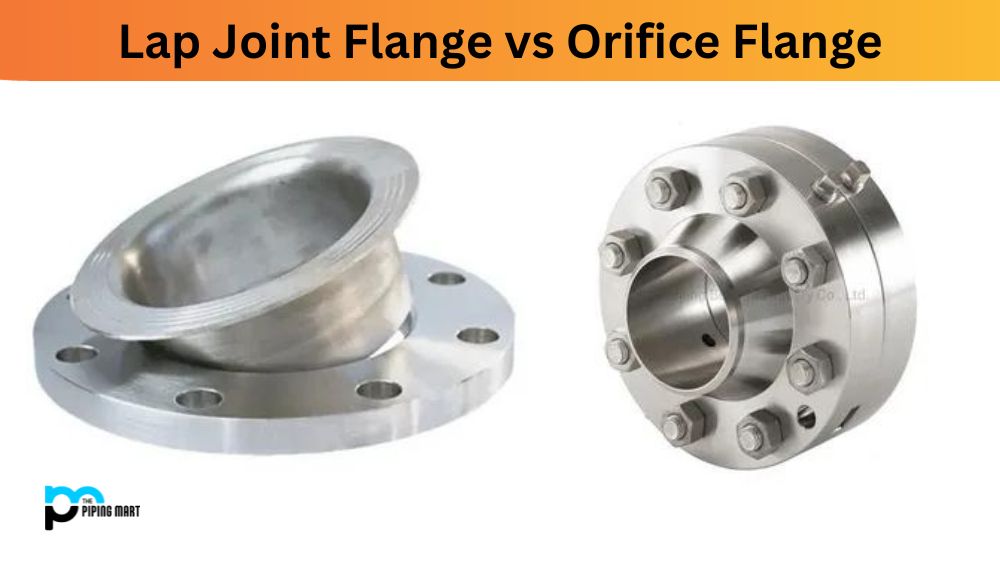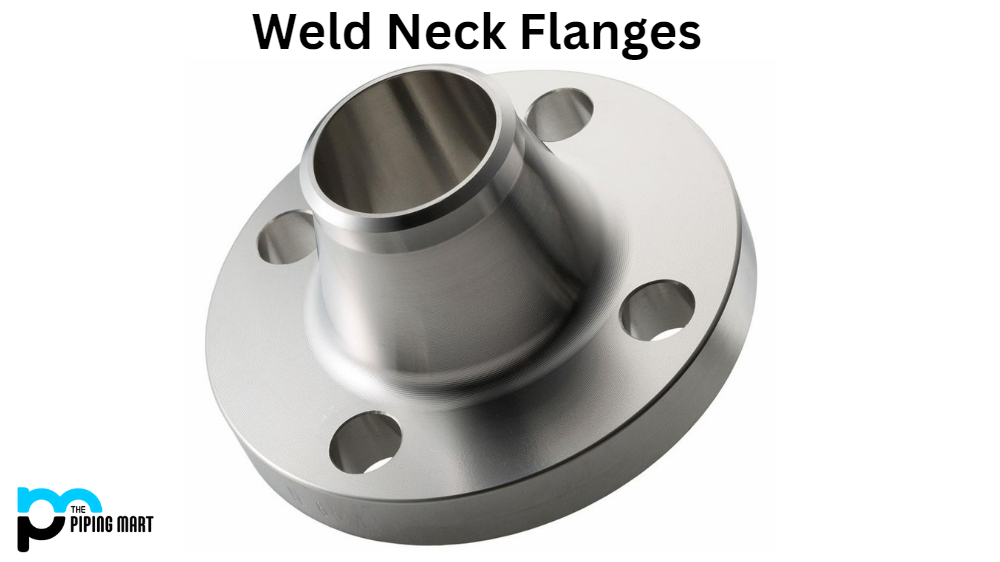RF flanges find extensive use across industries such as aerospace, automotive, electronics, and food processing. Their primary function is to create a tight seal between two components, allowing for the smooth flow of air or fluids. Serving as essential hardware, RF flanges play a critical role in ensuring the efficient operation of machinery and systems. In this article, we will discuss the different types of RF flanges and how they are used.
What is RF Flange?
RF flange is a type of mechanical connection used for joining the ends of two pieces of piping. This type of flange is most often used in high-pressure, low-temperature applications due to its ability to form an airtight seal and withstand extreme pressures. RF flanges allow for easy assembly, maintenance, and removal of large pipes and assemblies as well as ensuring that pipes are properly connected for optimal pressure and flow control. In addition, RF flanges reduce the risk of leakage by forming a superior seal when compared to other types of flanges. With its strong connection, increased security and safety, and ease of setup, the RF flange is an ideal choice for many industrial projects.
RF Flange Types
RF (Raised Face) flanges encompass various types, each serving specific purposes. Common variations include standard RF flanges, compact RF flanges, and long weld neck RF flanges. Standard RF flanges feature a raised face around the bore, providing a sealing surface when compressed. Compact RF flanges have a reduced face height, offering a more streamlined design for space-constrained installations. Long weld neck RF flanges boast an extended neck for additional reinforcement and improved structural integrity. These variations fulfill diverse needs in piping systems, ensuring efficient sealing and reliable performance across different applications.
RF Flanges Uses
RF flanges have many uses across multiple industries. In aerospace, they are commonly used to connect aircraft parts together securely so that fuel can be transported safely from one point to another without leaking out during flight. In the automotive industry, they are used to connect engine components, such as intake manifolds or intercoolers, together so that air can be circulated properly during operation. In electronics, they can be used to securely connect cables together so that electrical signals can be transmitted without any interference or loss in signal quality.
RF Flanges Dimension
|
ANSI |
NOMINAL | OUTSIDE | OUTSIDE | THICKNESS | DIAMETER | DIAMETER | NUMBER | DIAMETER |
|---|---|---|---|---|---|---|---|---|
| DIAMETER | DIAMETER OF | OF FLANGE | OF BOLT | OF BOLT | ||||
| CLASS | PIPE SIZE | OF BOLTS | OF BOLTS | |||||
| OF FLANGE | RAISED FACE | tf | CIRCLE | HOLES | ||||
| 3/4 | 3.88 | 1.69 | 0.44 | 2.75 | 0.62 | 4 | 0.50 | |
| 1 | 4.25 | 2.00 | 0.50 | 3.12 | 0.62 | 4 | 0.50 | |
| 1 1/2 | 5.00 | 2.88 | 0.62 | 3.88 | 0.62 | 4 | 0.50 | |
| 2 | 6.00 | 3.62 | 0.69 | 4.75 | 0.75 | 4 | 0.62 | |
| 3 | 7.50 | 5.00 | 0.88 | 6.00 | 0.75 | 4 | 0.62 | |
| 4 | 9.99 | 6.19 | 0.88 | 7.50 | 0.75 | 8 | 0.62 | |
| 150 | 6 | 11.00 | 8.50 | 0.94 | 9.50 | 0.88 | 8 | 0.75 |
| 8 | 13.50 | 10.62 | 1.06 | 11.75 | 0.88 | 8 | 0.75 | |
| 10 | 16.00 | 12.75 | 1.12 | 14.25 | 1.00 | 12 | 0.87 | |
| 12 | 19.00 | 15.00 | 1.19 | 17.00 | 1.00 | 12 | 0.87 | |
| 14 | 21.00 | 16.25 | 1.31 | 18.75 | 1.12 | 12 | 1.00 | |
| 16 | 23.50 | 18.50 | 1.38 | 21.25 | 1.12 | 16 | 1.00 | |
| 18 | 25.00 | 21.00 | 1.50 | 22.75 | 1.25 | 16 | 1.12 | |
| 20 | 27.50 | 23.99 | 1.62 | 25.00 | 1.25 | 20 | 1.12 | |
| 24 | 32.00 | 27.25 | 1.82 | 29.50 | 1.38 | 20 | 1.25 | |
| 3/4 | 4.62 | 1.69 | 0.56 | 3.25 | 0.75 | 4 | 0.62 | |
| 1 | 4.88 | 2.00 | 0.62 | 3.50 | 0.75 | 4 | 0.62 | |
| 1 1/2 | 6.12 | 2.88 | 0.75 | 4.25 | 0.88 | 4 | 0.75 | |
| 2 | 6.50 | 3.62 | 0.81 | 5.00 | 0.75 | 8 | 0.62 | |
| 3 | 8.25 | 5.00 | 1.06 | 6.62 | 0.88 | 8 | 0.75 | |
| 4 | 10.00 | 6.19 | 1.19 | 7.88 | 0.88 | 8 | 0.75 | |
| 300 | 6 | 12.50 | 8.50 | 1.38 | 10.62 | 0.88 | 12 | 0.75 |
| 8 | 15.00 | 10.62 | 1.56 | 13.00 | 1.00 | 12 | 0.87 | |
| 10 | 17.50 | 12.75 | 1.82 | 15.25 | 1.12 | 16 | 1.00 | |
| 12 | 20.50 | 15.00 | 1.94 | 17.75 | 1.25 | 16 | 1.12 | |
| 14 | 23.00 | 16.25 | 2.06 | 20.25 | 1.25 | 20 | 1.12 | |
| 16 | 25.50 | 18.50 | 2.19 | 22.50 | 1.38 | 20 | 1.25 | |
| 18 | 28.00 | 21.00 | 2.31 | 24.75 | 1.38 | 24 | 1.25 | |
| 20 | 30.50 | 23.00 | 2.44 | 27.00 | 1.38 | 24 | 1.25 | |
| 1 | 4.88 | 2.00 | 0.69 | 3.50 | 0.75 | 4 | 0.62 | |
| 1 1/2 | 6.12 | 2.88 | 0.88 | 4.50 | 0.88 | 4 | 0.75 | |
| 2 | 6.50 | 3.62 | 1.00 | 5.00 | 0.75 | 8 | 0.62 | |
| 3 | 8.25 | 5.00 | 1.25 | 6.62 | 0.88 | 8 | 0.75 | |
| 4 | 10.75 | 6.19 | 1.50 | 8.50 | 1.00 | 8 | 0.87 | |
| 600 | 6 | 14.00 | 8.50 | 1.88 | 11.50 | 1.12 | 12 | 1.00 |
| 8 | 16.50 | 10.62 | 2.19 | 13.75 | 1.25 | 12 | 1.12 | |
| 10 | 20.00 | 12.75 | 2.50 | 17.00 | 1.38 | 16 | 1.25 | |
| 12 | 22.00 | 15.00 | 2.62 | 19.25 | 1.38 | 20 | 1.25 | |
| 14 | 23.75 | 16.25 | 2.75 | 20.75 | 1.50 | 20 | 1.37 | |
| 16 | 27.00 | 18.50 | 3.00 | 23.75 | 1.62 | 20 | 1.50 | |
| 1 1/2 | 7.00 | 2.88 | 1.25 | 4.88 | 1.12 | 4 | 1.00 | |
| 2 | 8.50 | 3.62 | 1.50 | 6.50 | 1.00 | 8 | 0.87 | |
| 3 | 9.50 | 5.00 | 1.50 | 7.50 | 1.00 | 8 | 0.87 | |
| 900 | 4 | 11.50 | 6.19 | 1.75 | 9.25 | 1.25 | 8 | 1.12 |
| 6 | 15.00 | 8.50 | 2.19 | 12.50 | 1.25 | 12 | 1.12 | |
| 8 | 18.50 | 10.62 | 2.50 | 15.50 | 1.50 | 12 | 1.37 | |
| 10 | 21.50 | 12.75 | 2.75 | 18.50 | 1.50 | 16 | 1.37 | |
| 1 1/2 | 7.00 | 2.88 | 1.25 | 4.88 | 1.12 | 4 | 1.00 | |
| 2 | 8.50 | 3.62 | 1.50 | 6.50 | 1.00 | 8 | 0.87 | |
| 1500 | 3 | 10.50 | 5.00 | 1.88 | 8.00 | 1.25 | 8 | 1.12 |
| 4 | 12.25 | 6.19 | 2.12 | 9.50 | 1.38 | 8 | 1.25 | |
| 6 | 15.50 | 8.50 | 3.25 | 12.50 | 1.50 | 12 | 1.37 | |
| 8 | 19.00 | 10.62 | 3.62 | 15.50 | 1.75 | 12 | 1.62 |
Conclusion
In conclusion, RF flanges are an essential piece of industrial hardware with many uses across multiple industries. They come in a variety of shapes and sizes depending on the application they are being used for and help ensure that air or fluids can flow freely while maintaining pressure between two components. Regardless of the industry you work in, understanding how these devices work is essential if you want your equipment to function optimally while remaining safe at all times. With this knowledge at hand, engineers working in any field should have no trouble finding the right type of RF flange for their specific needs.

Pipingmart is a B2B portal that specializes in metal, industrial and piping items. Additionally, we share the latest information and information about materials, products and various types of grades to assist businesses that are involved in this business.





